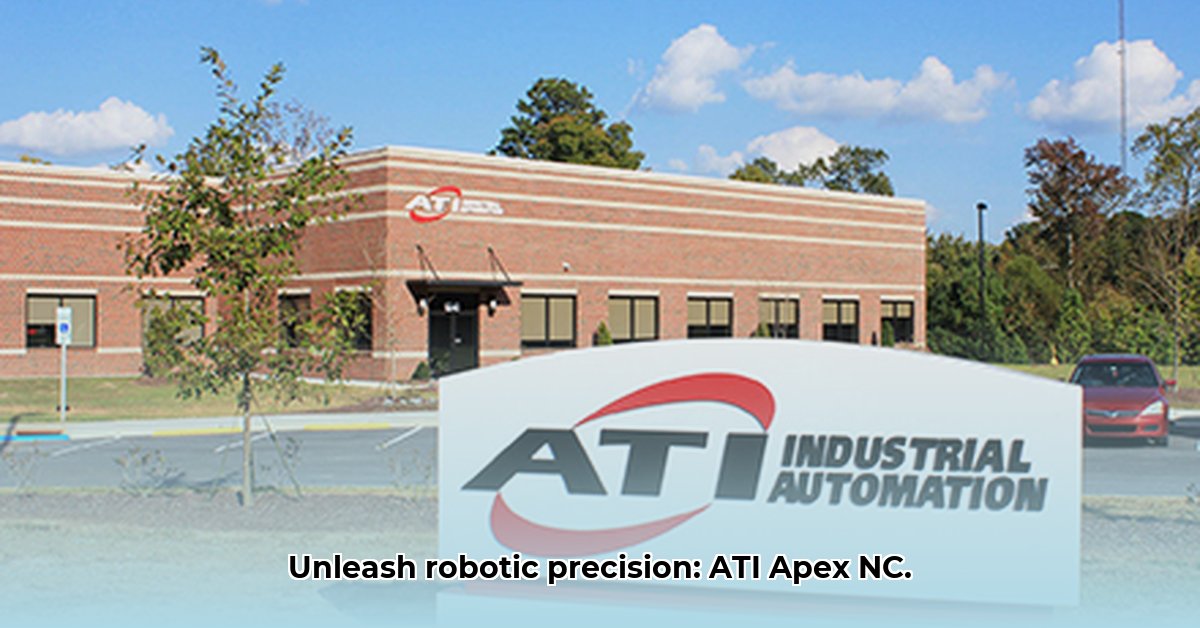
The ATI Industrial Automation Apex NC force/torque sensor (a device that measures force and torque) is revolutionizing robotic precision. By providing real-time feedback on applied forces and torques, it allows robots to perform delicate tasks with unprecedented accuracy and repeatability. This enhancement translates to improved quality, efficiency, and safety across various industries.
How the Apex NC Enhances Robotic Precision
The Apex NC integrates directly into a robot's end-effector (the tool it uses, like a gripper), continuously measuring forces and torques. This data is transmitted to the robot controller, enabling minute adjustments in real-time. This precise control minimizes errors, prevents damage to delicate parts, and ensures consistent results. Unlike a simple on/off switch, the Apex NC adds a level of sophisticated control analogous to a human hand’s sensitivity.
Applications Across Industries
The Apex NC finds applications in diverse industries demanding high precision:
- Electronics Manufacturing: Precise placement of tiny components on circuit boards. The Apex NC minimizes damage risk and ensures consistent assembly.
- Automotive Assembly: Accurate fastening of parts, ensuring consistent torque and preventing damage. This leads to higher-quality vehicles and fewer defects.
- Medical Device Manufacturing: The sensor's controlled force prevents damage to sensitive components, maintaining sterility and quality.
- Aerospace: The precise assembly required in aerospace manufacturing is seamlessly handled by the sensor's ability to manage force and torque accurately.
Advantages of Using the Apex NC
The ATI Industrial Automation Apex NC offers several key advantages:
- Unmatched Precision: Real-time force/torque feedback facilitates extremely fine adjustments during robotic operations.
- Exceptional Accuracy: Consistent, repeatable results minimize errors and maximize product quality.
- Increased Efficiency: Improved control translates to faster cycle times and higher overall productivity.
- Reduced Part Damage: Precise control prevents damage to sensitive components, reducing waste and costs.
- Superior Process Control: Minimizes variability and enhances the overall consistency of robotic processes.
Choosing the Right Apex NC Model: Key Considerations
Selecting the appropriate Apex NC model requires careful consideration of several factors:
- Payload Capacity: Ensure the sensor's capacity exceeds the combined weight of the end-effector and the manipulated part.
- Accuracy Requirements: The chosen sensor's accuracy should meet or exceed the precision demands of the specific task.
- Interface Compatibility: Verify compatibility with your robot controller and other system components.
- Environmental Conditions: Account for temperature, humidity, and other environmental factors that might affect sensor performance.
Troubleshooting Common Issues
While highly reliable, occasional issues might arise. Here are some solutions:
- Sensor Calibration: Regular calibration is vital for maintaining optimal performance. Scheduled calibrations ensure continued accuracy.
- Communication Issues: Inspect cables and network connections for loose connections or other problems.
- Signal Interference: Environmental noise can interfere with sensor signals. Shielding or signal filtering might be necessary.
Dr. Anya Sharma, Lead Robotics Engineer at Innovative Automation Solutions, states, "The ATI Industrial Automation Apex NC has been instrumental in increasing our production efficiency by 15% while also reducing part defects by 20%. Its real-time force feedback is a game-changer for precision robotic tasks."
Conclusion: Unlocking Robotic Potential
The ATI Industrial Automation Apex NC significantly enhances robotic capabilities, particularly in applications requiring precision and repeatability. By carefully considering application requirements and following best practices, users can maximize the sensor's potential and achieve significant improvements in efficiency and product quality. The investments in precision and control directly translate to improved productivity, reduced waste, and higher quality outputs.